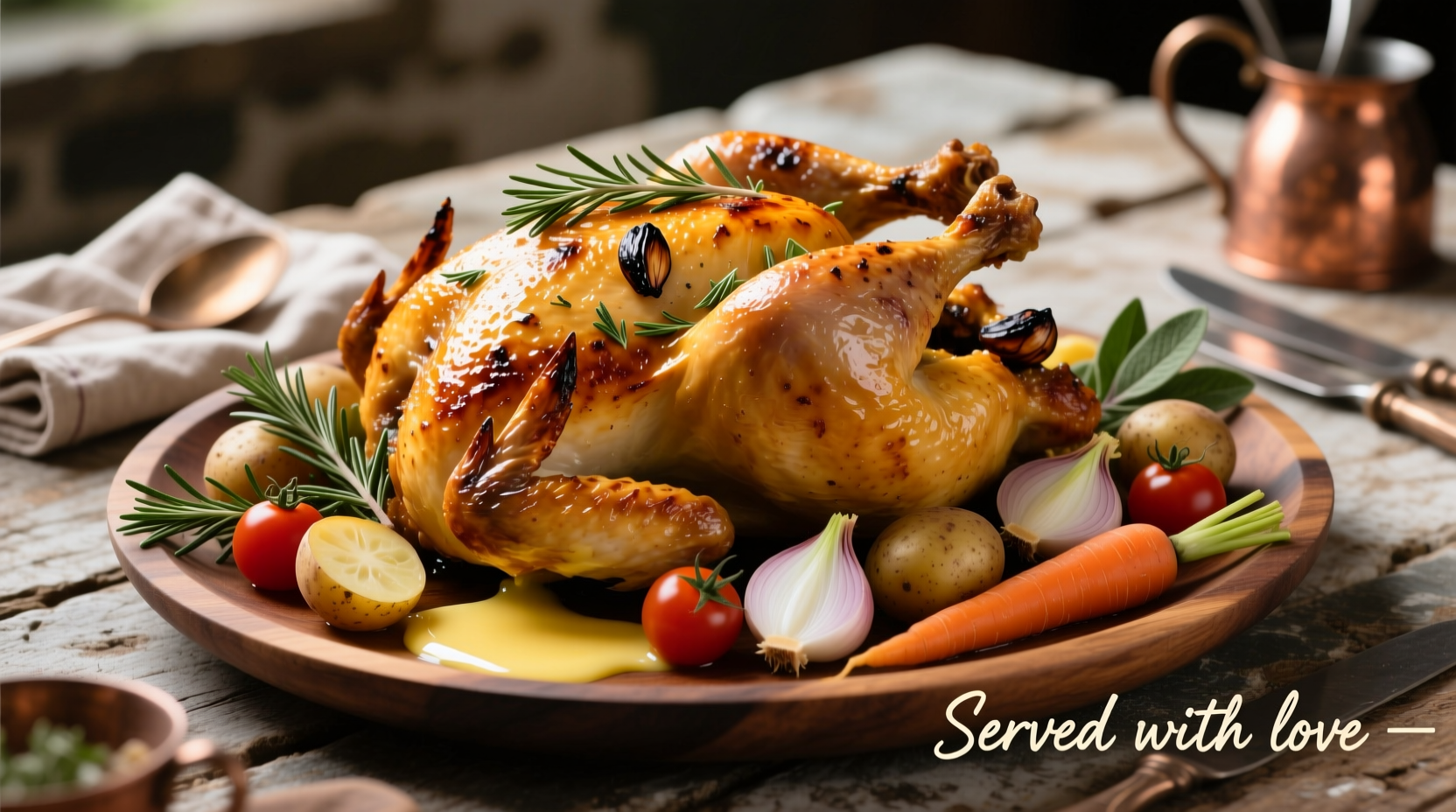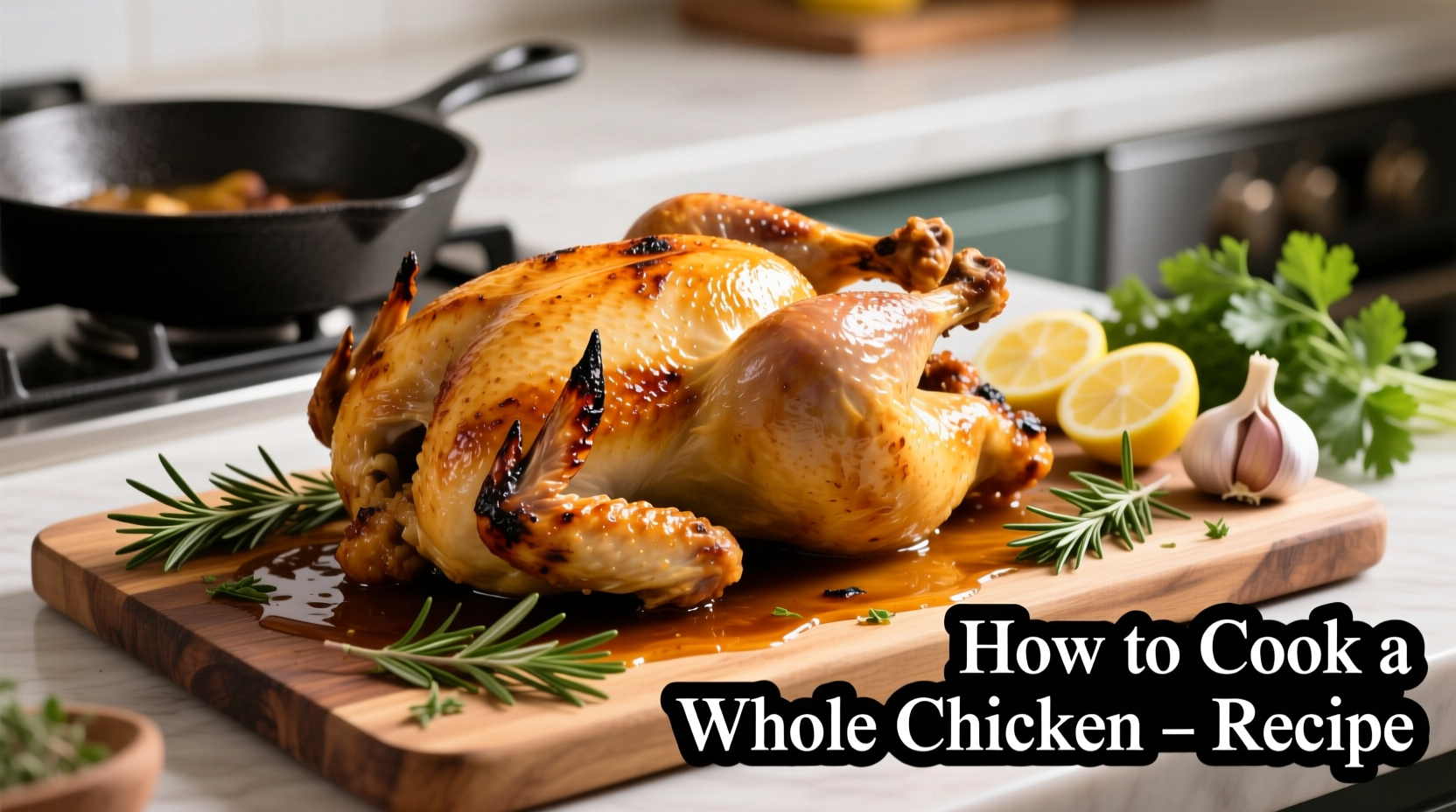Mastering how to cook a whole chicken recipe transforms weeknight dinners with minimal effort and maximum flavor. This comprehensive guide reveals professional techniques that guarantee restaurant-quality results every time, whether you're cooking for family dinner or special occasions. Forget dry, bland poultry - our tested method delivers tender meat with crackling skin through precise temperature management and strategic seasoning.
Why This Whole Chicken Method Works
Unlike complicated recipes requiring special equipment, this approach uses basic kitchen tools while incorporating culinary science principles. The high-heat start creates immediate browning through the Maillard reaction, while the temperature reduction ensures even cooking without drying. According to USDA Food Safety and Inspection Service guidelines, poultry must reach 165°F internal temperature for safety, but our method achieves this while maintaining optimal moisture retention.
| Cooking Stage | Temperature | Time per Pound | Internal Temp Target |
|---|---|---|---|
| Initial Sear | 425°F | 15 minutes | N/A |
| Main Roasting | 375°F | 12-15 minutes | 150-155°F |
| Resting Period | Room Temp | 15 minutes | 165°F (final) |
Essential Preparation Steps
Proper preparation determines 70% of your success when learning how to cook a whole chicken recipe. Begin by selecting a fresh, air-chilled bird (1.5-3.5 lbs ideal for even cooking). Pat the chicken completely dry with paper towels - this critical step enables proper browning. Season generously under the skin with salt and pepper, then rub the exterior with olive oil. Trussing with kitchen twine maintains shape and promotes even cooking, though it's optional for beginners.

Mastering the Cooking Process
Position your oven rack in the center and preheat to 425°F. Place chicken breast-side up on a roasting rack over vegetables (carrots, onions, celery add flavor without burning). The initial high heat creates immediate caramelization - don't open the oven during this critical phase. After 15 minutes, reduce temperature to 375°F and continue roasting until the thickest part of the thigh reaches 150-155°F on an instant-read thermometer.
Avoiding Common Mistakes
Most failed attempts at how to cook a whole chicken recipe stem from three errors: insufficient drying before seasoning, skipping the thermometer, and carving too soon. Our method specifically addresses these pitfalls. The resting period allows juices to redistribute - cutting immediately causes moisture loss. If your kitchen smells smoky, your oven temperature may be inaccurate; invest in an independent oven thermometer for best results.
When This Method Shines (and When to Adjust)
This standard roasting technique works perfectly for birds under 4 pounds. For larger chickens (over 4.5 lbs), consider spatchcocking (removing the backbone) to ensure even cooking. In high-altitude locations above 3,000 feet, increase cooking time by 5-10 minutes per pound. Always verify doneness with a thermometer rather than relying solely on timing, as oven variations significantly impact results.
Carving Like a Professional
After resting, remove twine and place chicken on a cutting board. Start by removing legs and wings, then slice breast meat against the grain. Save the carcass for homemade stock - simmer with vegetables and herbs for 2-3 hours. This whole chicken recipe yields enough meat for 4-6 servings plus flavorful stock for soups or sauces.
Troubleshooting Guide
If skin isn't crispy, your oven temperature was likely too low or chicken wasn't sufficiently dried. For uneven cooking, rotate the pan halfway through roasting. Dry meat typically indicates overcooking - always remove at 155°F as carryover cooking will reach the safe 165°F during resting. For enhanced flavor, try adding lemon quarters and fresh herbs under the skin before roasting.











 浙公网安备
33010002000092号
浙公网安备
33010002000092号 浙B2-20120091-4
浙B2-20120091-4